

Optimize Your Multiplexed Imaging for Spatial Biology Analysis
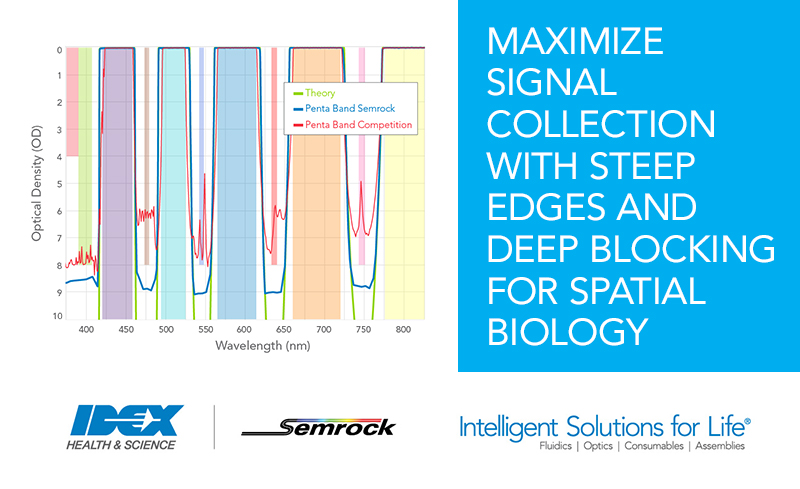
No matter what approach you take to reveal the transcriptome or proteome of cells, capturing lots of data from precious samples demands multiplexed imaging. IDEX Health and Science (IH&S) understands the challenges of spatial biology and our Semrock-brand optical filters are designed with the following spectral features-
- Multiple transmission bands with steep edges, deep out-of-band blocking, and high transmission to detect multiple signals simultaneously and with more sensitivity.
- A larger format to accommodate the larger field-of-view (FOV).
- Wide Angle of Incidence (AOI) tolerance to deliver precious photons to the sample and ensure consistent imaging across the FOV.
- Reproducible filter performance to ensure your end users receive consistent results within and across instruments.
How do you manage the spectral complexities needed for spatial biology analysis?
Develop a spatial biology optical filter— Multiplexed imaging for spatial biology benefits greatly from a custom, multi-band optical emission filter that not only achieves high transmission across the wavelength range of the fluorophores of interest, but also provides deep blocking across excitation bands where excitation light leakage can occur. Ensuring consistently steep transition from high transmission to deep blocking is critical to maximizing the signal-to-noise ratio (SNR).
Case Study – Maximize Signal Collection with Steep Edges and Deep Blocking
Mission:
Recently, the Semrock-brand filters team at IH&S took on the challenge to create a penta-band emission filter which pushed the limits of filter performance to deliver high transmission, deep blocking, and ultra-steep
edges between them to maximize SNR.
Solution:
In a dynamic collaboration between RD&E, Applications Support, and Product Management, the Semrock-brand filters team at IH&S created this penta-band emission filter. Further, the IH&S Semrock Optical Filters
team brought Optical Density (OD) theory into measurement reality by utilizing their new industry-leading Kola Deep spectral measurement system (SMS) to demonstrate performance versus the competition and theory.
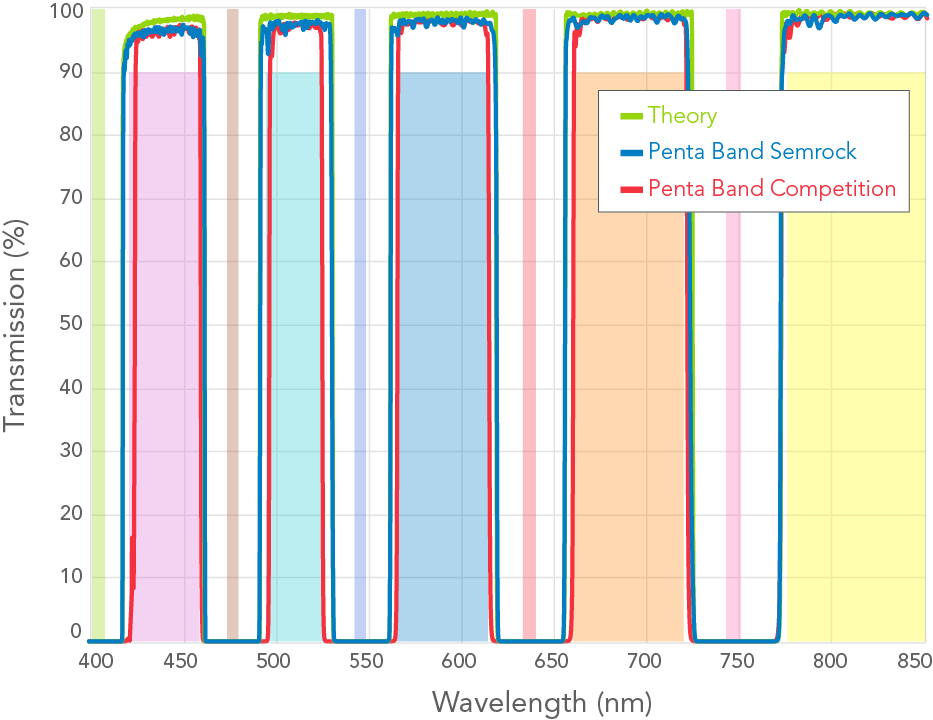
Figure 1: Comparison of measured transmission performance of the IH&S Semrock penta-band emission filter (blue) and a competitor’s penta-band emission filter (red). The IH&S Semrock filter provides steeper and wider edges to allow for maximal emission collection while not compromising on blocking between channels. IH&S Semrock theory curve (green) shown for reference.
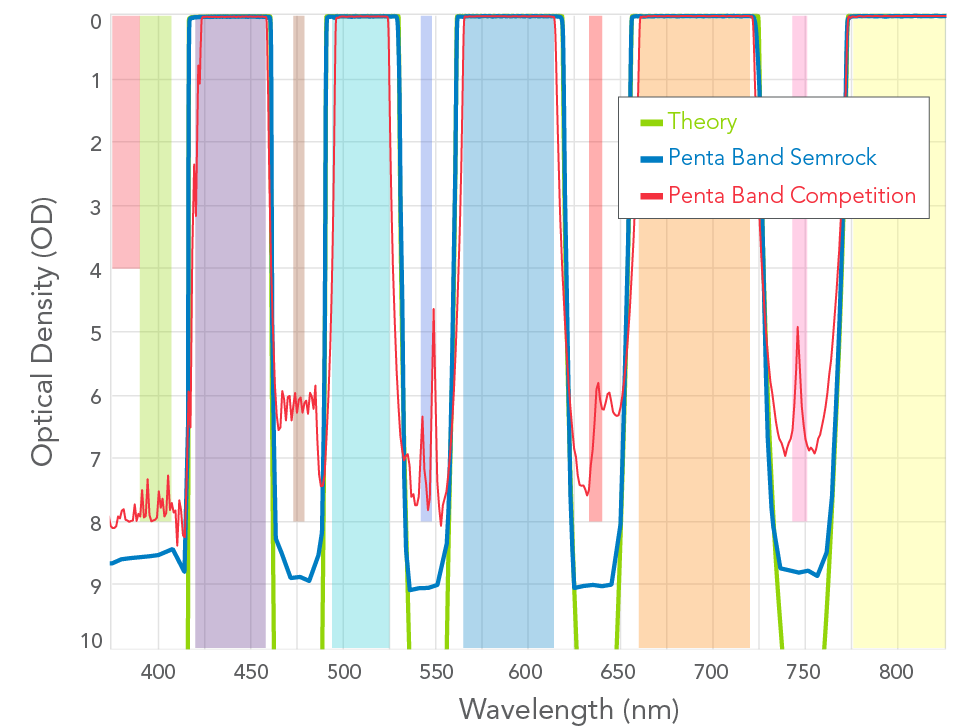
Figure 2: Comparison of actual OD performance of the IH&S Semrock penta-band emission filter (blue) and a competitor’s penta-band emission filter (red) both measured on IH&S Semrock’s Kola Deep SMS. While the IH&S Semrock filter tracks alongside theory (green) until reaching the measurement floor of the Kola Deep SMS, the competitor’s filter does not provide the same levels of OD blocking, falling short on performance across all 5 blocking bands.
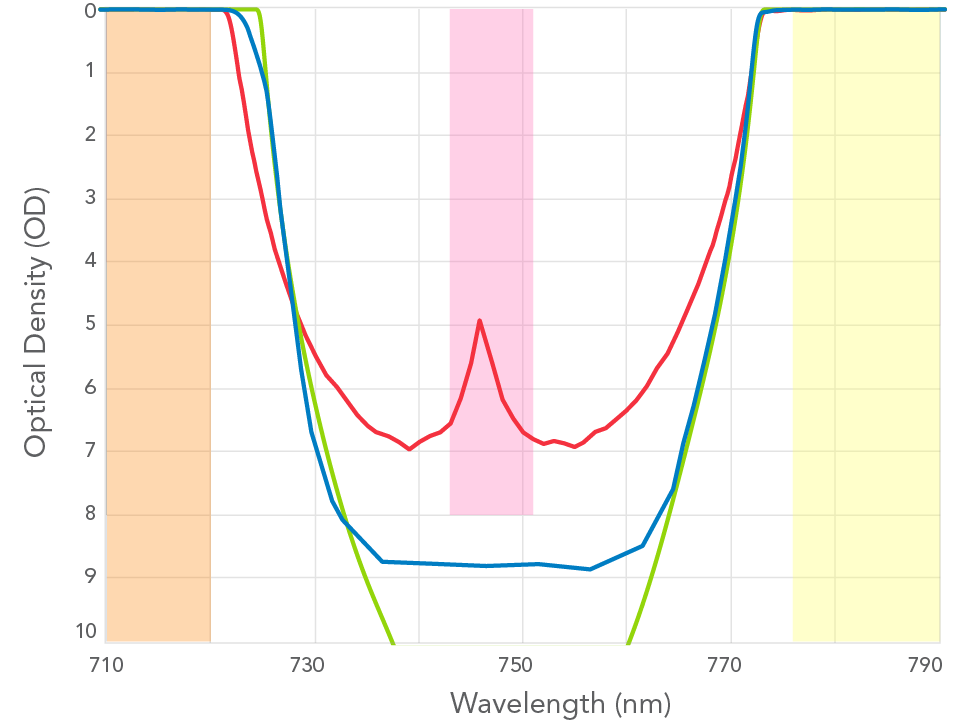
Figure 3: Zoom view of the reddest blocking band. While the IH&S Semrock curve tracks nicely with theory until reaching the noise floor of the measurement at ~OD9*, the competitor’s filter struggles to reach OD 7, with a noticeable degradation in OD blocking performance at 745 nm.
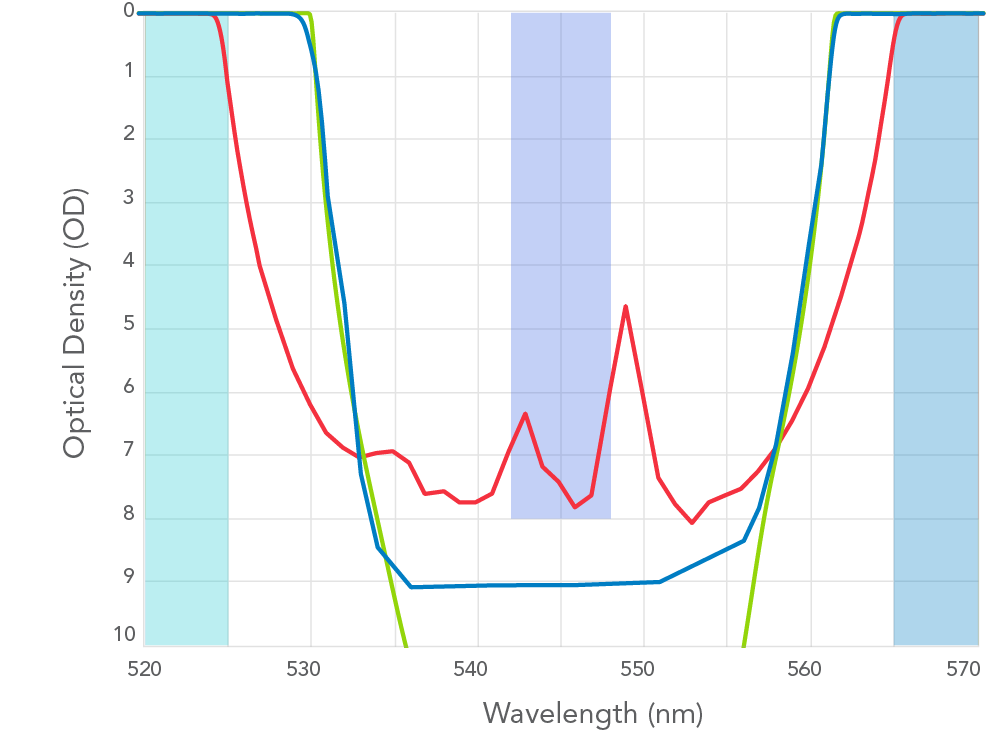
Figure 4: Zoom view of the middle blocking band. While the IH&S Semrock curve tracks nicely with theory until reaching the noise floor of the measurement at ~OD9*, the competitor’s filter exhibits less steep edges and struggles to reach OD 8, with noticeable degradation in OD blocking performance at 543 nm and 549 nm.
With superior product design and manufacturing capabilities, we give you access to high-level engineering to enhance the performance of your spatial biology analysis and deliver consistently proven results.
Contact us to optimize your system by maximizing signal collection
*OD 9 measurement capability requires extended measurement time which may necessitate additional surcharge and may be limited to specific design features.
